The Shared Universes That Copied Marvel and Failed
More than a decade after The Avengers, Hollywood remains crazy for “shared cinematic universes,” be it superheroes, Ghostbusters, or Star Wars. But how successful has the model been?
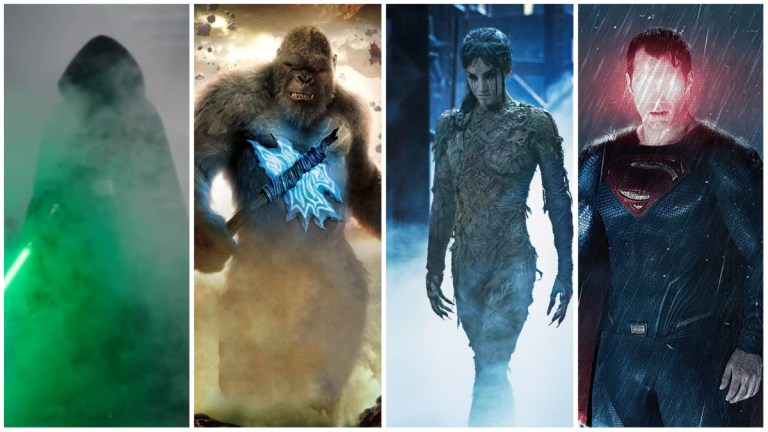
Marvel Studios did not invent the shared universe. Comic books had already been playing with the concept for decades. Nor did Marvel Studios pioneer putting it onscreen. Filmmakers started toying with this as a storytelling device since at least Frankenstein Meets the Wolf Man in 1943, and of course it’s been Toho Studios’ bread and butter since 1962—the first time Godzilla and King Kong got into a little donnybrook.
Nevertheless, it’s safe to say that before 2012, the idea of connecting your movies remained an eccentricity—a creative flourish by filmmakers like Kevin Smith or network television executives who wanted to maximize programming block synergy. It wasn’t something studios considered to be a viable commercial opportunity. Then The Avengers happened.
Released in 2012 and viewed throughout the industry as an ambitious bet by the upstarts at Marvel Studios, that movie became the first to gross $200 million in its opening domestic weekend. It would go on to dominate the rest of the moviegoing summer of 2012. More impressive still, it cemented the Marvel Cinematic Universe (or MCU) as a brand as reliable as McDonald’s in what kind of product you were going to get. Audiences have been turning up ever since, even when Marvel dabbled in the weird by making a movie about a talking raccoon, or another where the big comedy moment is cutting to screaming goats 10 times.
The loyalty Marvel fermented in viewers quickly became the prize of multimedia companies everywhere—and the model they’ve been chasing ever since. But how many of these shared universes have worked, and how many are still tying themselves into knots? Below is a brief overview about what a decade of corporate IP synergy has wrought, and a look at which are still standing.
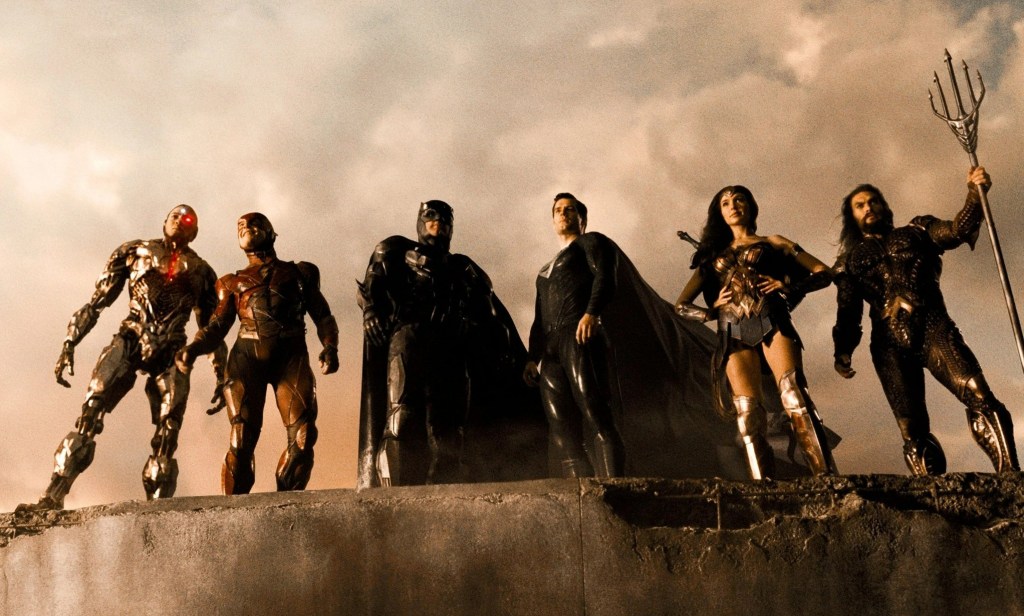
DC Extended Universe
The most obvious follower of Marvel Studios’ trendsetting is what many in the comic book industry call the (D)istinguished (C)ompetition. When The Avengers came out, Warner Bros. Pictures was busy hyping Christopher Nolan’s last chapter in a Batman trilogy, a movie that would close the book on a series that only four years earlier produced the first superhero movie to gross $1 billion globally. They were ending it. Forever. The last time we see that billion-dollar version of Bruce Wayne, he’s retired and sipping vino by the Arno with Catwoman.
No corporate entity in the age of streaming and shared universes would make that mistake again. To hell with artistic integrity when IP is on the line! Ironically, one year after The Dark Knight Rises, WB released Superman in a similar shade of moral gray; Man of Steel even had Nolan credited as a producer, and in a movie that looked closer to his grounded Batman flicks than the usual heightened flourishes associated with Man of Steel’s director, Zack Snyder. Yet afterward, WB and Snyder threw that approach into the wastebasket while speed ramping into a shared universe just like Marvel’s, except dark.
2016’s Batman v Superman: Dawn of Justice was supposed to be the express pass to a pseudo-Avengers clone the following year: Justice League. Unfortunately, as judged by BvS’ disastrous reviews, tepid CinemaScore, and weak box office multiplier, the general public’s reaction to Snyder’s approach was bad. The reaction to WB taking Justice League away from him and reshooting large swaths of it with Joss Whedon (who helmed The Avengers) was worse. Still, the DCEU limped on.
Did it work? If we’re being honest and looking at this like C-suite arithmetic, where “IP + crossover = endless profit,” then not really. The initial attempt at a stony faced grim-dark shared universe certainly failed, although it has its admirers who call it “the SnyderVerse.” However, the only SnyderVerse movie to receive good reviews and a leggy box office run was the one that started pulling away from Snyder’s approach; Patty Jenkins’ Wonder Woman.
Since then the DCEU has been a hodgepodge of competing styles and ideas that have yielded creatively satisfying movies (James Gunn’s The Suicide Squad) and a few box office behemoths (James Wan’s Aquaman). But the lack of faith and a cohesive vision has resulted in a scenario where three actors are simultaneously playing Batman for Warner Bros., each earning and dividing his share of fans, and the new studio management is so disgusted they’ve started shelving nearly finished projects—at least if they star Latinas. Yikes.

X-Men Cinematic Universe
Thanks to the shenanigans of licensing agreements made by Marvel Comics back in the ‘90s, there is more than one Marvel Cinematic Universe. In fact, there are several off-shoots, the most prominent of which was 20th Century Fox’s X-Men franchise (from back when 20th Century Fox existed).
Launched in 2000 via the exceedingly somber (and low budgeted) X-Men, this franchise deserves credit for helping launch the modern comic book movie craze, although Fox tended to view it as just a diminishing brand to make Wolverine movies starring Hugh Jackman before the 2010s. That quickly changed when Fox did their own take on an Avengers-sized crossover with the fairly underrated X-Men: Days of Future Past (2014), a more thoughtful kind of superhero blockbuster. It was also intended to be the launchpad to a variety of spinoffs and offshoots across the franchise’s cluttered timeline.
Did it work? Not quite. Admittedly, some of the spinoffs did quite well, with Ryan Reyolds’ Deadpool movies doing bigger numbers than the mainline X-films. Meanwhile, Hugh Jackman and James Mangold made an elegiac love letter to the Wolverine character that, to Fox’s credit, is impossible to imagine Disney ever greenlighting. However, those were risks done in the margins. The mainline X-films took the opportunity created by DofP and… threw it away with both hands.
By the time Simon Kinberg’s second attempt at adapting the Dark Phoenix Saga, aka Dark Phoenix, was released in 2019, the Fox X-Men universe was effectively dead because of Disney subsuming Fox like Sebastian Shaw. However, Dark Phoenix was so poor, and so poorly received, it would’ve likely put the nail in the X-Men universe’s coffin all on its own. And we didn’t even mention how Fox once had plans of crossing these movies over with Josh Trank’s Fantastic Four misfire from 2015!
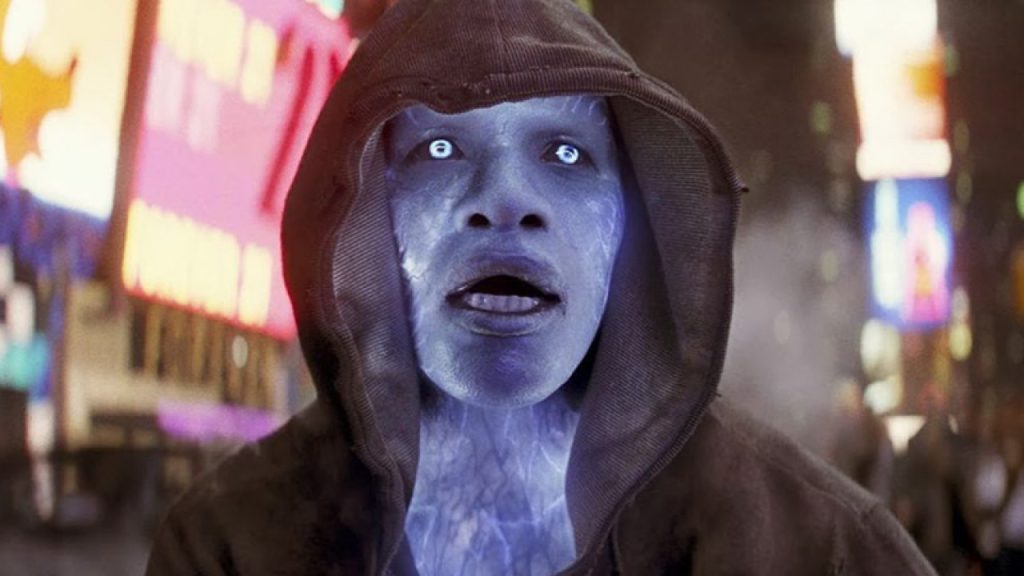
Spider-Man Shared Universe
Another would-be Marvel cinematic universe was the one Sony Pictures intended to originally spin out from the Andrew Garfield-led The Amazing Spider-Man movies. More specifically, after Sony attempted to remake Spidey in The Dark Knight’s image via the first Garfield Spidey picture—also released the same year as The Avengers—they then awkwardly turned this moody and downbeat interpretation of the character into a one-man Avengers where his villains would all get multiple movies.
2014’s The Amazing Spider-Man 2 is a dizzyingly disjointed collection of committee-approved storybeats and fiduciary requirements: Hey, look, there’s Felicia Hardy over there! And did you see Doc Ock’s metallic arms over here? DID YOU?!
Did it work? Absolutely not. Well, not when The Amazing Spider-Man 2 was supposed to be Sony’s shared universe Rosetta Stone, at least…

Spider-Man Villain Shared Universe
When at first you don’t succeed… you know the rest. More importantly, so does Sony. The Amazing Spider-Man 2 became the first Spidey movie to disappoint its studio at the box office. So out with Garfield, and in with Tom Holland, who would be the first Spider-Man to appear in the Marvel Cinematic Universe due to some high stakes corporate brinkmanship between Sony and Disney.
But while Holland is Marvel Studios’ Spidey, he isn’t the Spider-Man of the other shared cinematic universe centered around Spidey villains Sony has concurrently been making, beginning with Tom Hardy’s first appearance as the titular character in Venom (2018). Subsequent movies in this universe (or Venom-verse?) suggest Spider-Man probably exists there, so some speculate it could still be in the same sandbox as The Amazing Spider-Man movies.
But we’ve had no confirmation one way or the other, just tedious post-credits sequences threatening us with that Sinister Six movie Sony has wanted to make as their “Avengers” event since 2014.
Did it work? That’s a complicated question. Love them or hate them, Hardy’s trashy Venom flicks have eaten up autumn box office dollars as if they were brain cells. Conversely, Jared Leto’s Morbius was dead on arrival. Even so, that movie is the one to explicitly set up Venom, Morbius, and the Vulture teaming up “to do some good.” And Dakota Johnson as a vivacious Madame Web and Aaron Taylor-Johnson as Kraven the Hunter (who doesn’t hunt) are both just around the corner…
Do you ever start to feel suddenly tired?
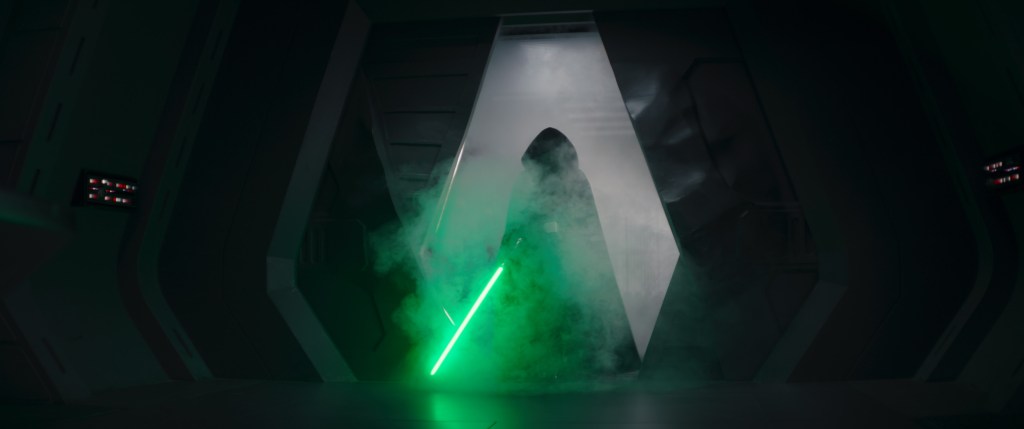
Star Wars Onscreen Universe
While superhero movies are responsible for the shared cinematic universe craze, the infection of this idea has been allowed to spread. Case in point: Star Wars. Technically, the George Lucas-created concept has long been a shared universe for fans who’ve consumed tales from the “expanded universe” of novels, comic books, and even video games over the decades.
But when Disney bought Lucasfilm they said forget that noise. Never happened! Doesn’t matter. Those were “Star Wars Legends.” Whereas Disney’s brandspanking new continuity would be Star Wars fact. And according to then-Disney CEO Bob Iger, the company would be releasing at least one new movie in this canon every year henceforth and until forever.
Did it work? That’s a complicated question, innit? Technically, the first several Disney produced Star Wars movies were beloved by most fans and critics alike, with The Force Awakens and Rogue One grossing $3 billion between them. And our personal favorite movie of this era of Disney brand management, Rian Johnson’s genuinely challenging The Last Jedi, also grossed $1.33 billion and received rave reviews.
Yet The Last Jedi starkly divided fans and presaged Disney releasing Solo: A Star Wars Story less than six months later—the first Star Wars movie to ever flop at the box office. Between that and Disney’s disastrous attempt at course correction via the insipid and toothless “end of the saga,” Star Wars: The Rise of Skywalker, Disney/Lucasfilm has appeared to lose all confidence in their approach. Three years after the fact, Disney has failed to either release or even put into production another Star Wars movie.
The brand of course continues to make Disney money via the steady stream of subscribers who tune in to watch Lucasfilm’s myriad Disney+ Star Wars shows. Yet only The Mandalorian has achieved the intangible status of being a “water cooler” series that seems to have penetrated the zeitgeist. Meanwhile Obi-Wan Kenobi seemed to come and go with nary a splash for a series that is a prequel to one of the most successful movies of all time. With that said, this month’s Andor is terrific and a fresh spin on the material, so maybe it can change that trend.

Dark Universe (Universal Monsters)
As mentioned in the intro, Universal’s monster movies between the 1930s and ‘40s pioneered the concept of a shared cinematic universe, so they deserved the chance to reboot the concept for the 21st century, post-Marvel.
Unfortunately, when they tried the studio put an emphasis on the “post-Marvel” aspect. As Universal Pictures chairman Donna Langley told THR in 2014, the whole concept of the “Dark Universe” was “to take it out of the horror genre, put it more in the action-adventure genre, and make it present day… reintroduce them to a contemporary audience.”
Thus why even before 2017’s The Mummy opened, Universal commissioned composer Danny Elfman to write an atmospheric theme for a splashy new “Dark Universe” title card, which was unveiled along with a cast photo of actors like Russell Crowe standing next to Tom Cruise, Javier Bardem, and Johnny Depp. Between them we were going to get “action-adventure” (read: superhero) takes on Dr. Jekyll/Mr. Hyde, the Mummy, and the Invisible Man, respectively.
Did it work? I really wish we could embed gifs into articles. Because I’d love to find one of Russell Crowe from The Nice Guys laughing his ass off.
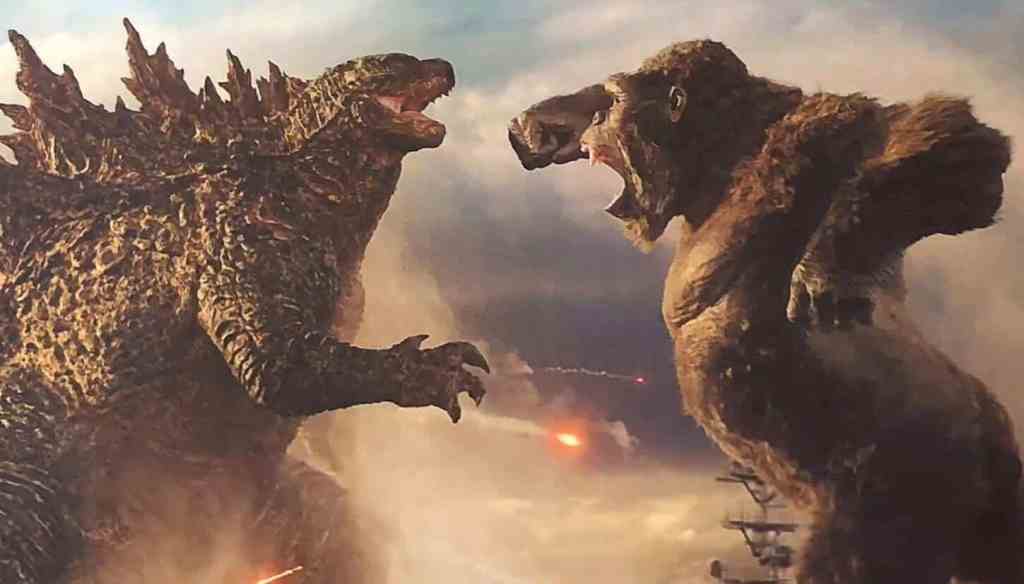
MonsterVerse (Toho Monsters)
Ah, here is WB/Legendary Pictures’ other shared cinematic universe, and the one that frustrated Universal Pictures by calling dibs on the “MonsterVerse” moniker first. Things worked out though since the MonsterVerse has certainly lasted longer than its “Dark” cousin.
Spun off from Legendary’s American remake of Godzilla in 2014—the one that gave the Big G The Dark Knight treatment—the MonsterVerse was always intended to recreate Toho Studios’ lovably eccentric shared universe of skyscraper-sized city demolition experts for an American audience. First, we’d see Godzilla tee up movies about Mothra and Rodan, and then the King of the Monsters could face off against Hollywood’s original kaiju: the King of Kongs.
Did it work? In terms of cultivating an audience eager to line up for Mothra, it sadly did not—which is a shame because Mothra is a graceful angel who’s too beautiful for your ugly world!
… But it did hype audiences up for Godzilla vs. Kong (2021), one of the earliest success stories from the post-pandemic box office. That one also made enough money for Legendary to pursue a sequel and a spinoff television series. So we’ll file this one under the “wait and see” column.

Transformers
After five movies of maximum Bayhem, which earned Paramount Pictures a lot of money (and perhaps a small degree of sheepish shame), the studio attempted to do one right. Gone was the incoherent cacophony of explosions, the leering camera angles, and lewd jokes. In came fidelity to the cartoon show fans like, a screenplay that bothered with little things like character development, and a winsome young rising star. So was 2018’s Bumblebee made.
Did it work? Critics and most fans might prefer Bumblebee, but when it opens to about a quarter of what Transformers: Age of Extinction did in 2014, that’s a wrap on this spinoff franchise. Even so, Paramount is going to give this series another go with next year’s Transformers: Rise of the Beasts.
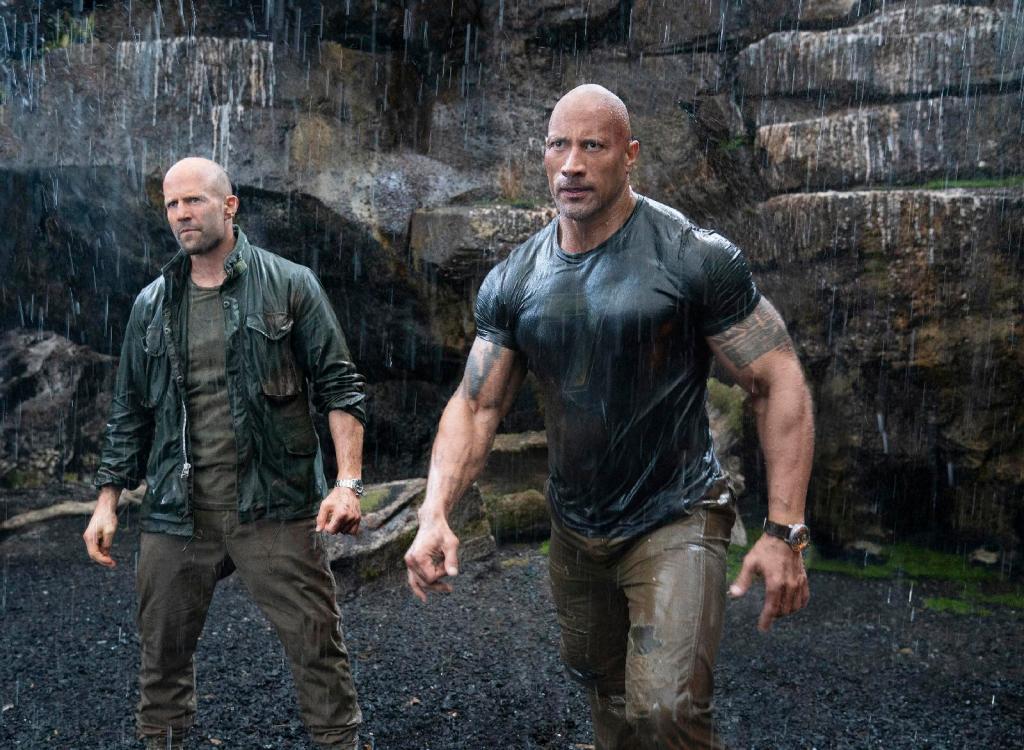
Fast & Furious
Universal’s attempts to reboot the Universal Monsters as a 21st century shared cinematic universe crashed and burned. But they can always rely on family. That word, “family,” has to comprise about three-quarters of the dialogue in the Fast & Furious movies, and those pictures are still going strong after nine mainline films, and with at least two more on the way.
Given the global popularity of the Fast & Furious franchise brand, a spinoff was inevitable, and in 2019 we got it with the eloquently titled Fast & Furious Presents: Hobbs & Shaw.
Did it work? As a one-off, it sure as hell did! Hobbs & Shaw crossed $750 million globally, which is comparable to many of the franchise’s installments pre-Furious 7. However, the movie is also the result (and some might argue cause) of an epic falling out between “family” members Vin Diesel and Dwayne Johnson. And three years later, no director has been attached to a Hobbs & Shaw 2 (although it’s officially in development), and Universal has been relatively quiet about the project, as well as any other spinoff that might peel off other family members from the franchise’s fairly vast ensemble cast.
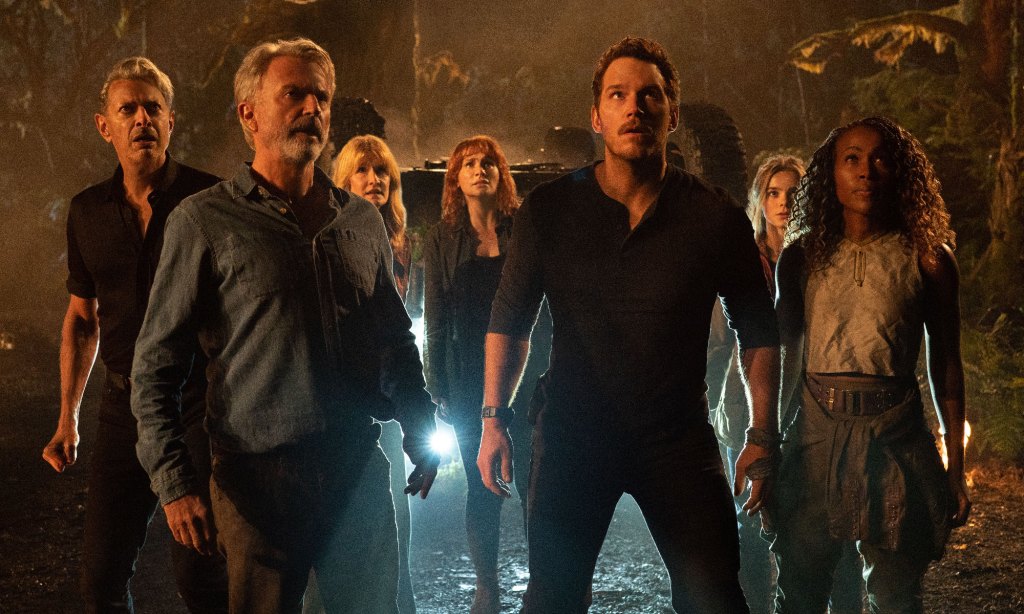
Jurassic World
It feels like just a matter of time before Universal accepts the inevitable and crosses over Fast & Furious with Jurassic Park. The idea of a T-Rex chasing Vin Diesel in a Dodge Charger sounds stupid, we know, but did you not see Jurassic World Dominion? That sixth JP movie was the third in a row to gross over $1 billion. And while the flick marked “the end” of the Jurassic Park and Jurassic World narrative, such as it became, it’s likely only the beginning as far as Comcast shareholders are concerned.
Producer Frank Marshall even agreed Dominion is “the start of a new era.” Talking with Slashfilm, Marshall said, “Dominion’s going to wrap up this trilogy, but we’re not resting on our laurels. We’re going to sit down, and we’re going to see what the future is. We have that wonderful series, Camp Cretaceous, on Netflix. We obviously want to make quality, good movies with great storytelling, great writers and directors, but we’re definitely looking to do more in the Jurassic world.”
Did it work? It’s too early to say since the only official spinoff has been Netflix’s animated series Camp Cretaceous. But as Marshall noted, that cartoon was a hit. Kids love dinosaurs, and Vin Diesel loves “family.” Come on Universal, stop fighting destiny!
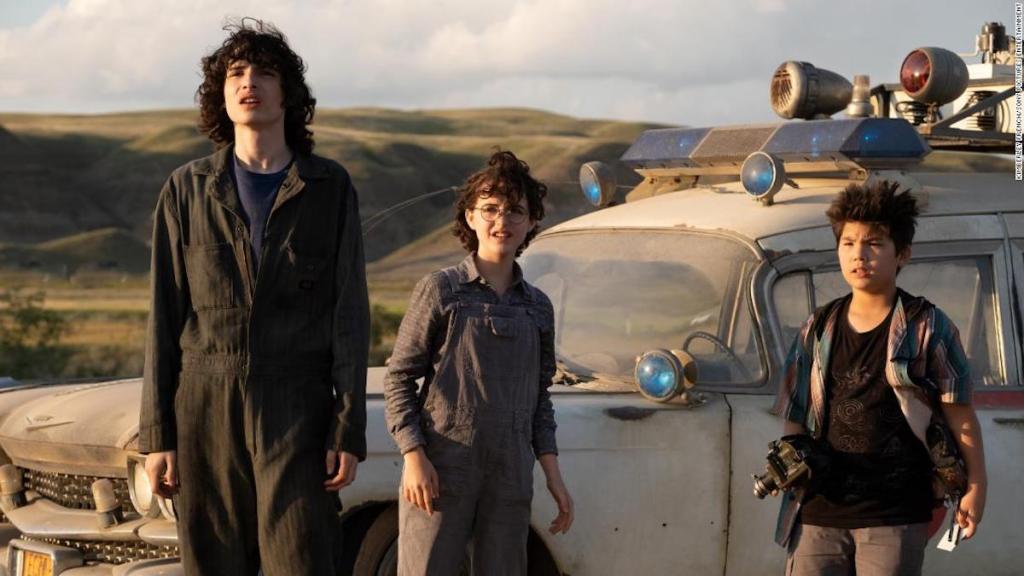
Ghostbusters
Sony Pictures was so confident that they had a winner in building a shared Ghostbusters cinematic universe that they even created a nifty new production company with a cool logo to herald the concept: Ghost Corps. We first saw that logo in front of what was supposed to be the beginning of the shared universe, 2016’s female-led Ghostbusters.
We all remember how that was received by the fan community. Whatever quality (or lack thereof) there was in Paul Feig’s Ghostbusters remake, “toxic masculinity” does not even begin to describe the fanboy implosion and lashing out against the new cast of actresses on social media. So Sony tried again with last year’s Ghostbusters: Afterlife, another return to this IP’s well starring a very young girl… but one who is set up to be Egon Spengler’s granddaughter and who gets to have the baton passed to her by the original Ghostbusters’ male stars.
Did it work? Kind of. Ghostbusters: Afterlife director Jason Reitman told us last year that he wants a variety of different types of directors to come to Sony and help expand “the Ghostbusters mythology.” To date, however, only a direct sequel to Afterlife (which performed well if not spectacularly at the box office) has been greenlit.
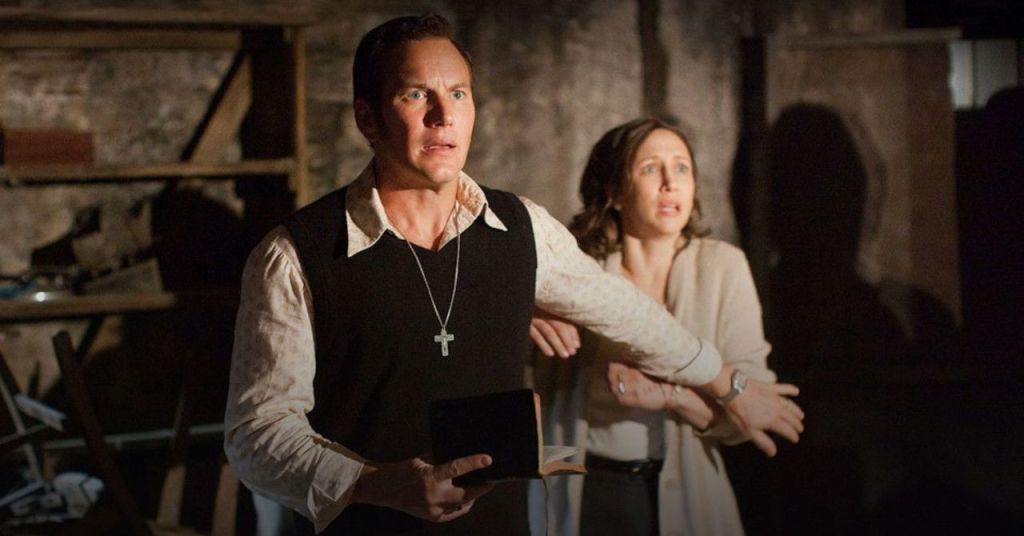
The Conjuring
On the spooky-adjacent wavelength, one that we can say upfront that has worked very well for its studio of WB/New Line Cinema is The Conjuring shared universe. This saga was once tangentially related to “true stories” (or at least those that provided some air of period piece authenticity) in the first two superb The Conjuring movies, which were directed by James Wan and adapted from the “case files” of Ed and Lorraine Warren by screenwriters Chad and Carey W. Hayes. All that verisimilitude was blown to hell though so WB could start churning out ever more incredulous spinoffs like the Annabelle trilogy, The Nun, and The Curse of La Llorona.
Did it work? In terms of carrying on the quality of the first two Conjuring movies? Not at all. In terms of Hollywood scaring the bejeezus out of moviegoers to the tune of hundreds of millions of dollars? Can we get a hell yes!

The Kingsman
When Kingsman was released in 2015, it was a frothy and amusing little hybrid of action, comedy, and drama that shouldn’t have worked. But like so many other Matthew Vaughn genre-benders, it did. Given how the film was such a satire/homage of the James Bond franchise and greater spymania fad of the 1960s, it was a little bit of a surprise when Vaughn revealed he saw it expanding in numerous directions: sequels to Kingsman, a prequel set during World War I called The King’s Man, and even a television series spinoff based around “The Statesman,” the American spy agency that feels like a parody of American bravado (and a tie-in opportunity for bourbon whisky product placement).
Did it work? With the exception of The Statesman, it’s a credit to Vaughn’s tenacity (and ability to self-finance) that all of the above projects happened. Although the quality of Kingsman: The Golden Circle, and the poor box office reception of the oft-delayed The King’s Man, makes it debatable whether continuation was a good idea. With that said, last we heard Vaughn still wants to make Kingsman 3, and probably at a studio that won’t bury it in the same holiday weekend frame as a new Spider-Man movie, as Disney did the Kingsman prequel.
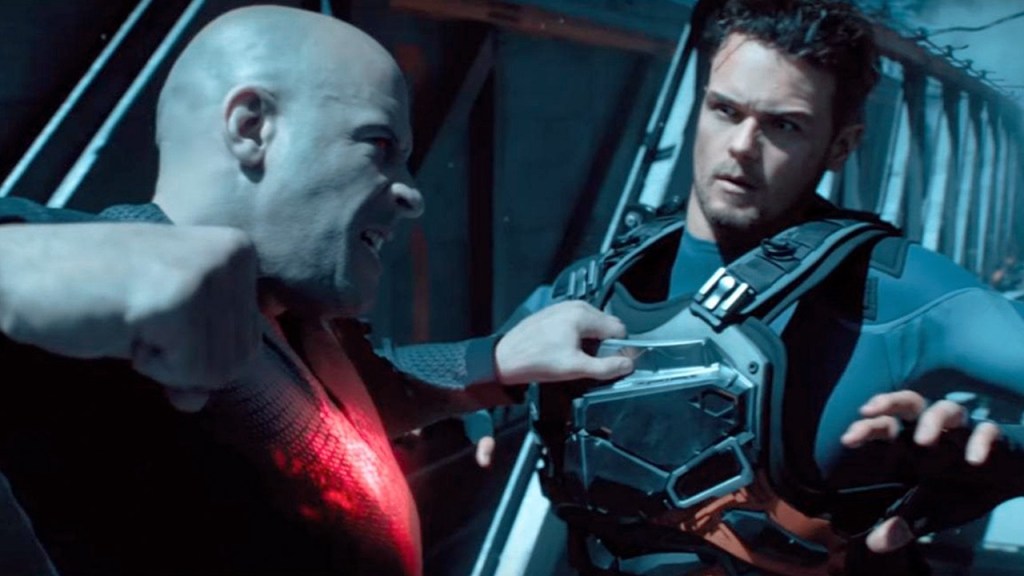
Bloodshot/Valiant
No, really, the Vin Diesel-starring adaptation of Valiant Comics’ Bloodshot was supposed to be the beginning of a shared cinematic universe.
Did it work? C’mon….

King Arthur: Legend of the Sword/Robin Hood (2018)
Believe it or not there was something of a small arms race between studios about who would be the first to adapt well-known intellectual property in the public domain—as in the thousand-year-old or so stories of King Arthur and Robin Hood. There really was a hot minute there where up to 10 different, competing versions of Robin Hood were in development, and some studios to make their King Arthur movies more supernatural (a la Pirates of the Caribbean) and others like a Mission: Impossible movie… whatever that meant.
The two that made it to the screen first, respectively, were WB’s Guy Ritchie misfire, King Arthur: The Legend of the Sword and Lionsgate’s spectacularly awful “Robin Hood: Origins,” which was then imaginatively retitled Robin Hood. If they had worked, studios imagined conceivable spinoffs starring Lancelot, Galahad, Little John, and even Friar Tuck.
Did it work? Heavens no. But their failure gave space for the brilliant The Green Knight adaptation to flourish last year. Who knows maybe someone will have a similar take on Robin Hood one day? The last time the character was a box office sensation was also the last time someone actually tried to capture at least the sense of adventure in the old tales: Kevin Reynolds with 1991’s Robin Hood: Prince of Thieves.
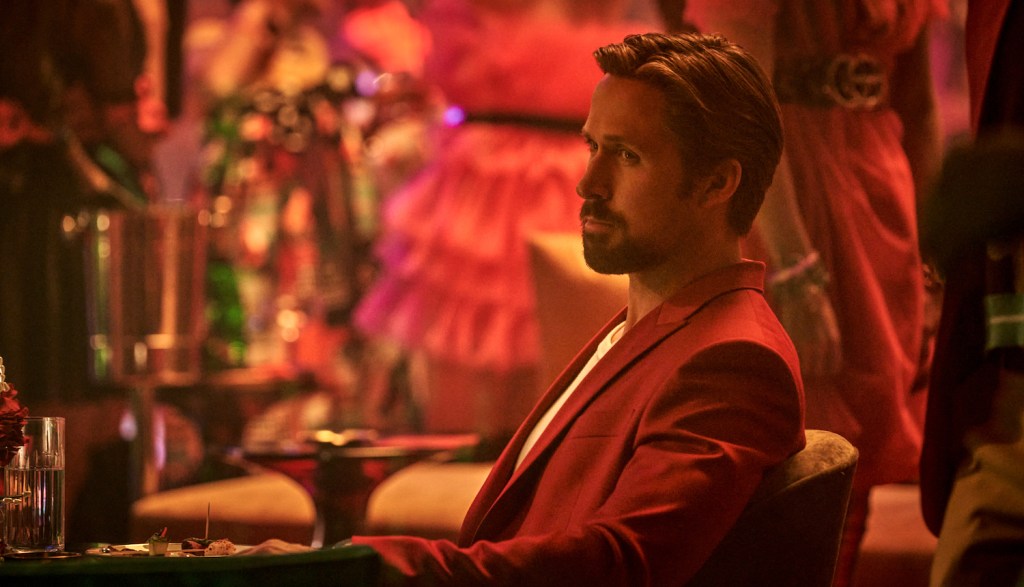
The Gray Man
Netflix’s most expensive movie to date was directed by Joe and Anthony Russo, the pair who helmed the highest grossing Marvel movie ever, Avengers: Endgame, and featured a star-studded cast led by Ryan Gosling, Chris Evans, Ana de Armas, Regé-Jean Page, Jessica Henwick, and Billy Bob Thornton. It was also supposed to be the beginning of a “shared cinematic universe” for the streaming service.
Did it work? According to Netflix it did, with more on the way…
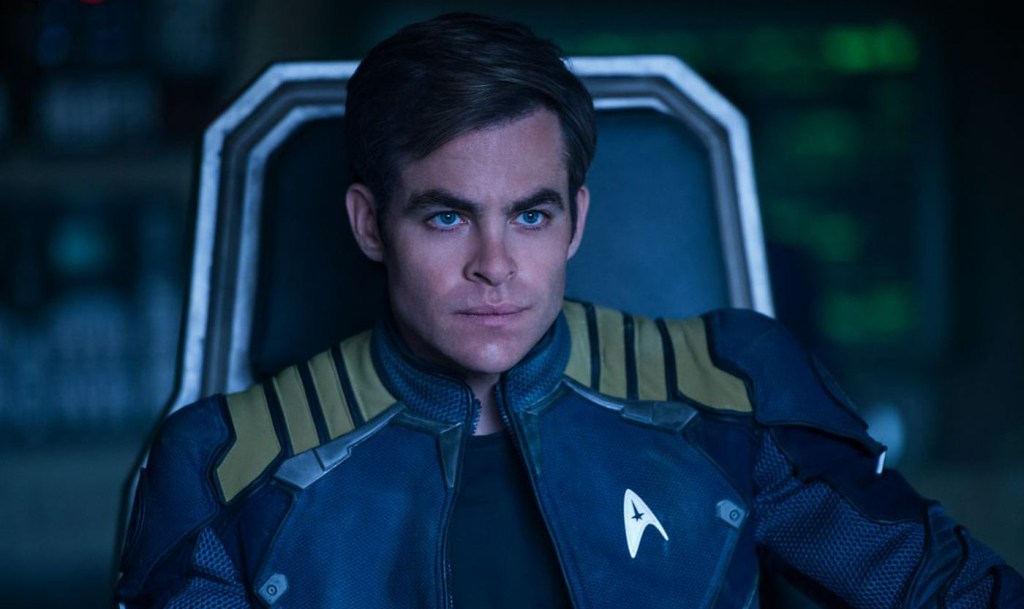
Star Trek
Star Trek was interconnecting movies and TV shows before Marvel made it look cool. William Shatner was still playing Captain Kirk on the big screen back when Patrick Stewart was leading the young crew of Star Trek: The Next Generation on television. Surely, Paramount Pictures, which along with Viacom owns the rights to all things Trek, could capitalize on that when the shared universe gold rush hit in the 2010s.
Did it work? Depends on how you look at it since Paramount never really tried. To date, they’ve released two Star Trek movies since J.J. Abrams’ Star Trek (2009) soft-rebooted the franchise. One imagines the long gap between the second and third films played a role in audiences’ diminishing interest in the franchise. Meanwhile Viacom’s streaming service(s), first under the umbrella of “CBS All-Access” and then as the revamped “Paramount+,” has seen Trek flourish where it’s probably always played best: on the small screen.
Nonetheless, one suspects Paramount would like to eventually get true interconnectivity up and running between the big and small screen…
Television Shared Universes
Speaking of television, we should acknowledge that the success of the MCU on the big screen, and more recently on streaming, has caused TV competitors to also view television as more than the search of the next big thing or even a strong, sturdy spinoff. In the 2010s, we saw AMC turn The Walking Dead brand into an assembly line of spinoffs; The CW had great success on a micro-scale of doing their own superhero shared universe under “the Arrowverse” umbrella; and HBO seems off to a promising start in its effort to turn Game of Thrones into an IP empire.
Granted, there’s only been one spinoff, House of the Dragon, which is based on a finished book in author George R.R. Martin’s canon. So it remains to be seen what happens when a new executive team gets its armada of spinoff shows based on paragraph or two-page long tangents in Martin’s novels off and running.
